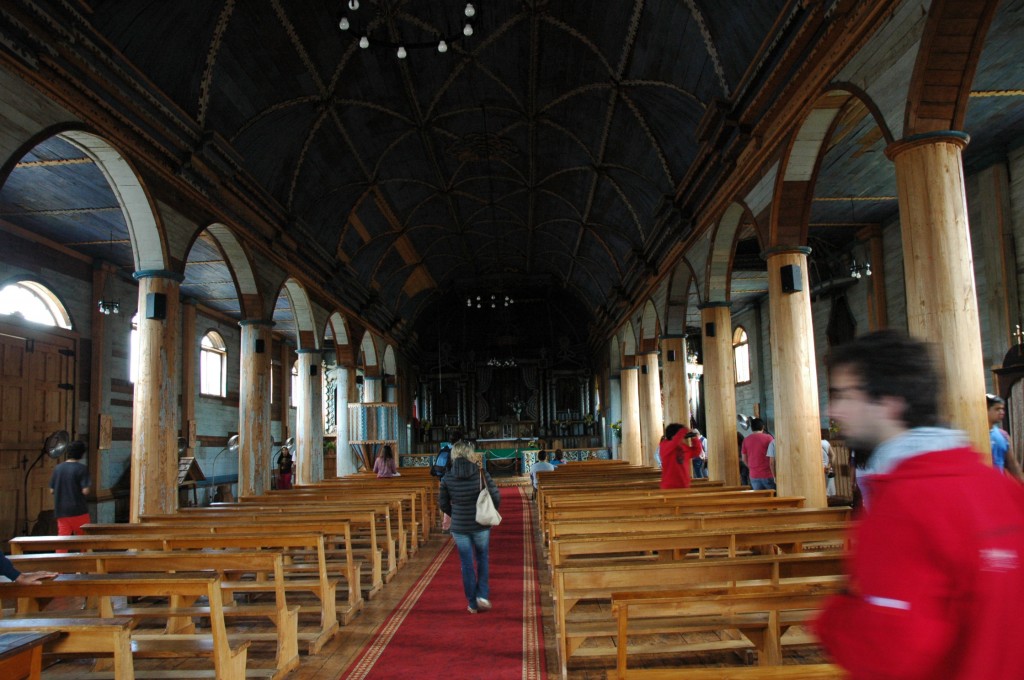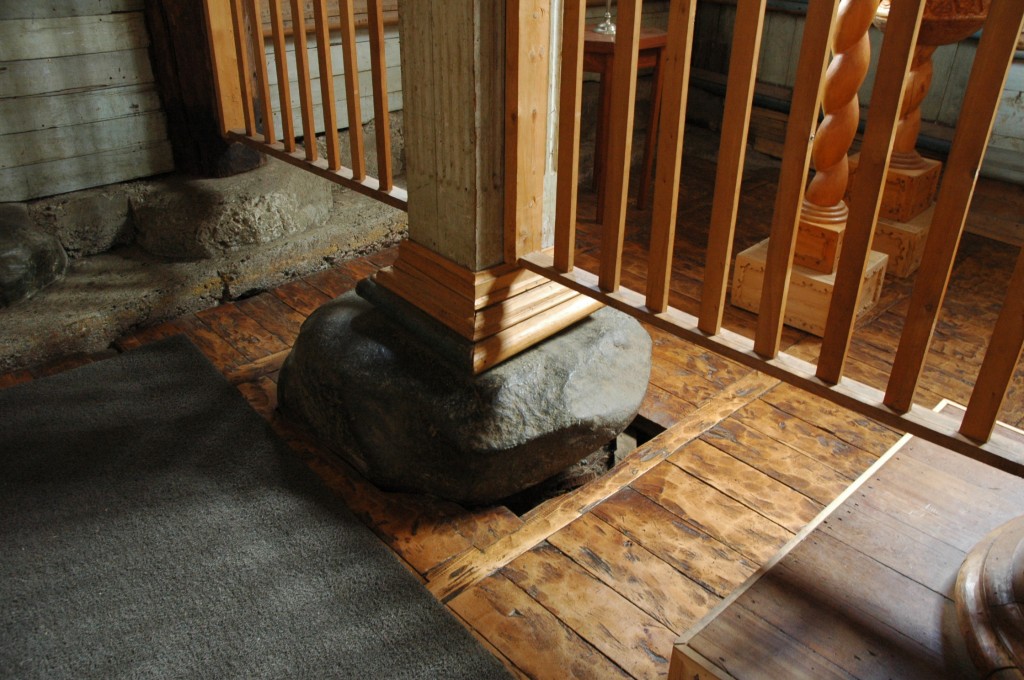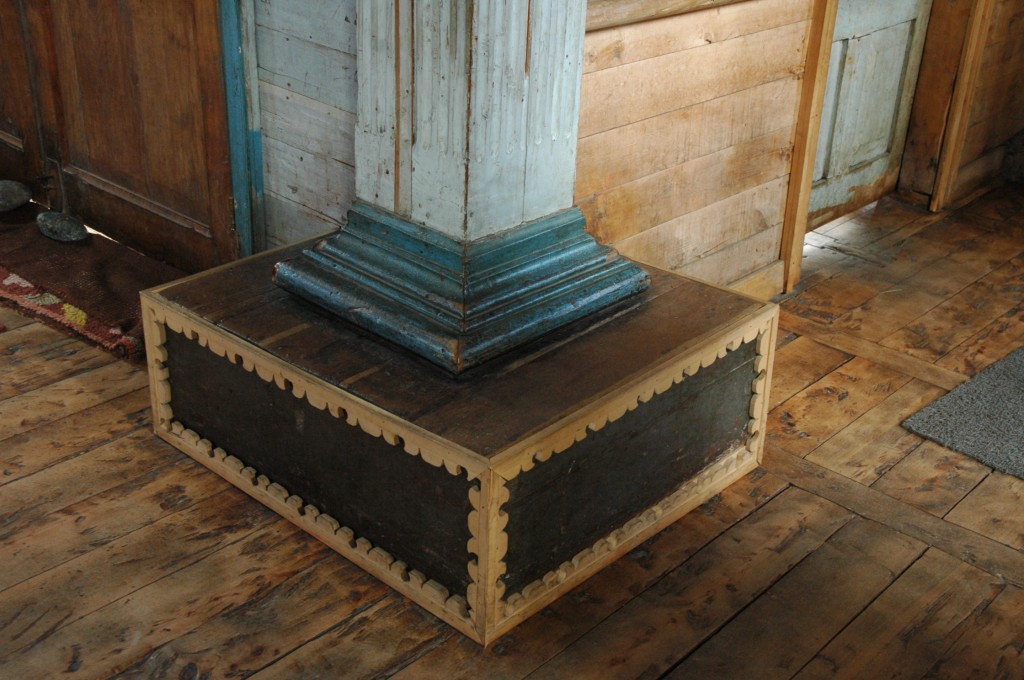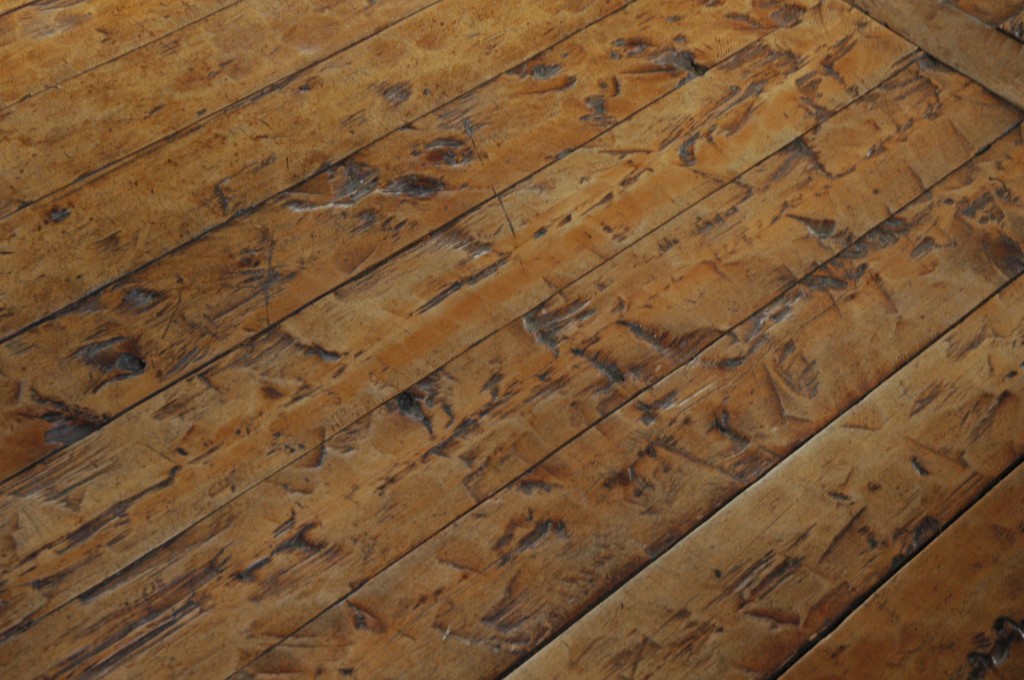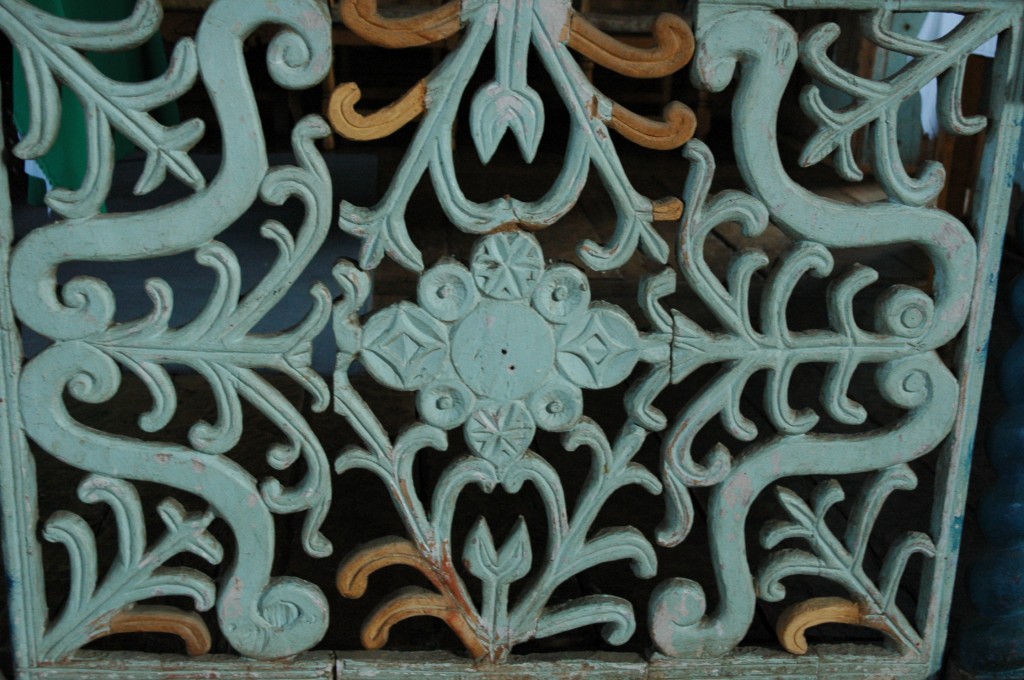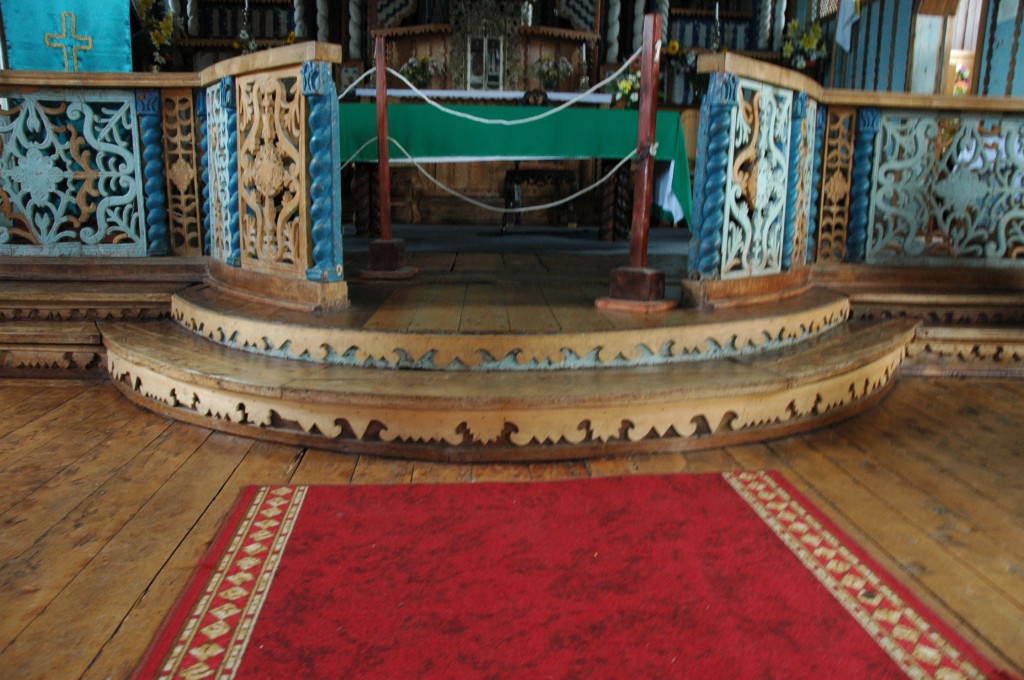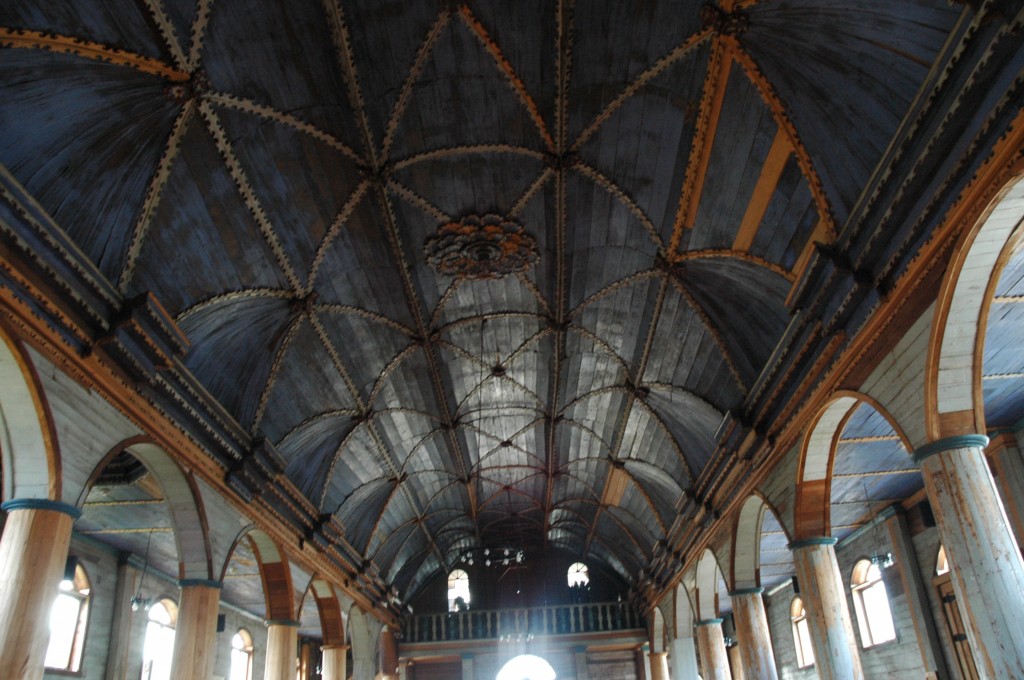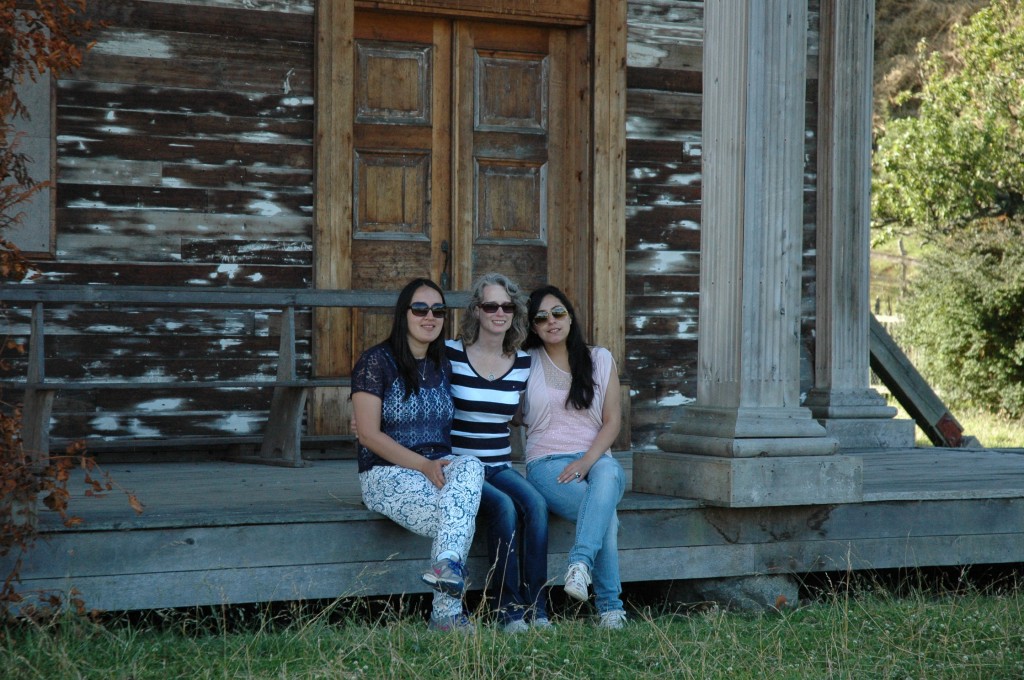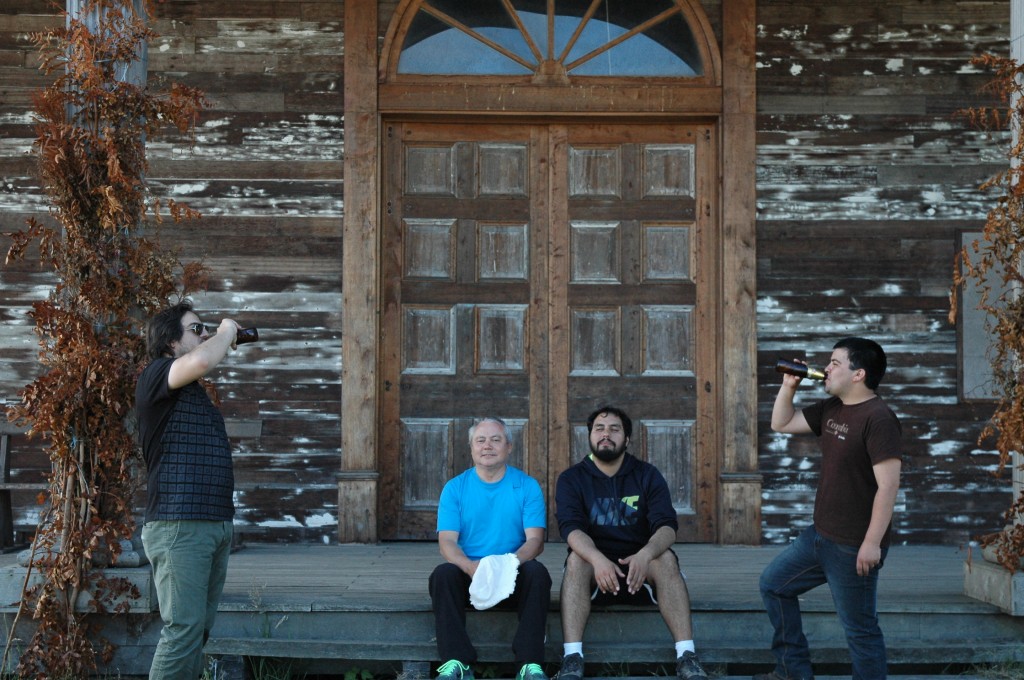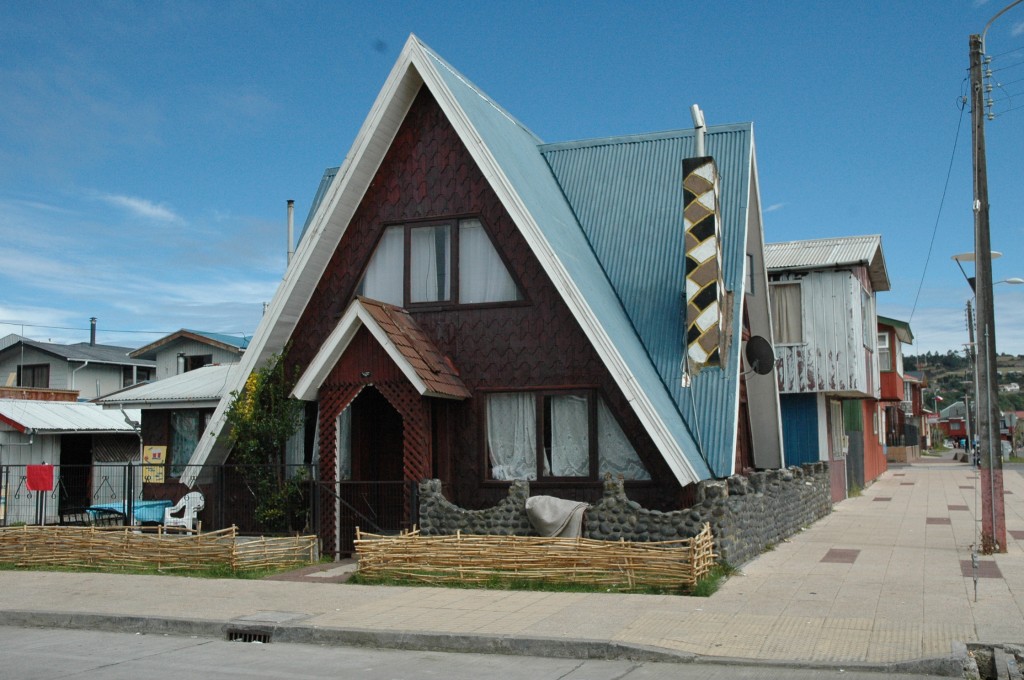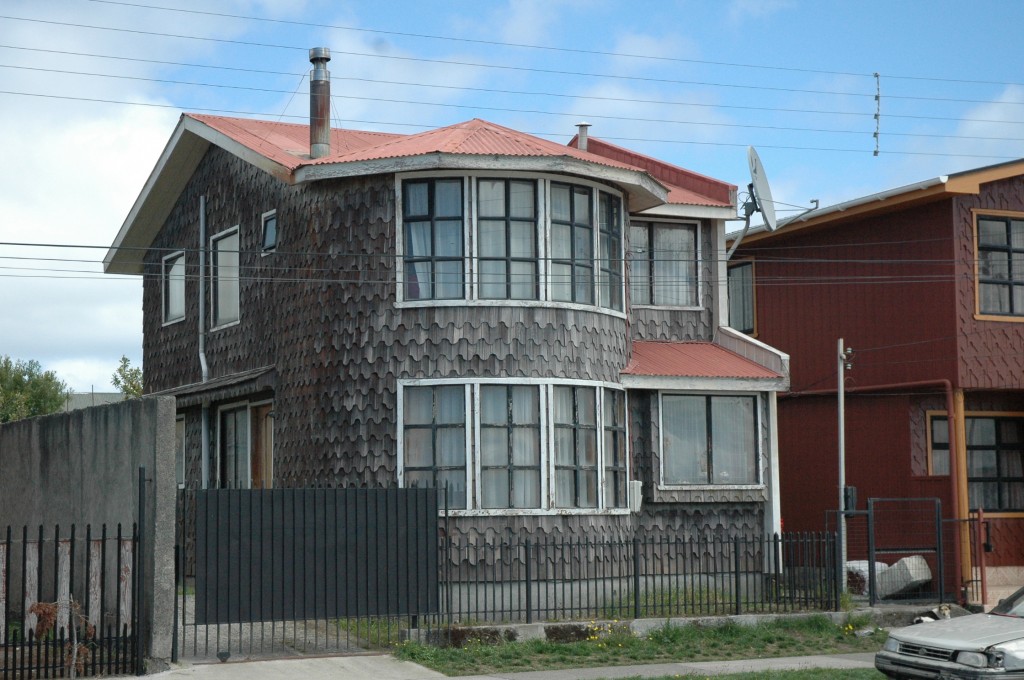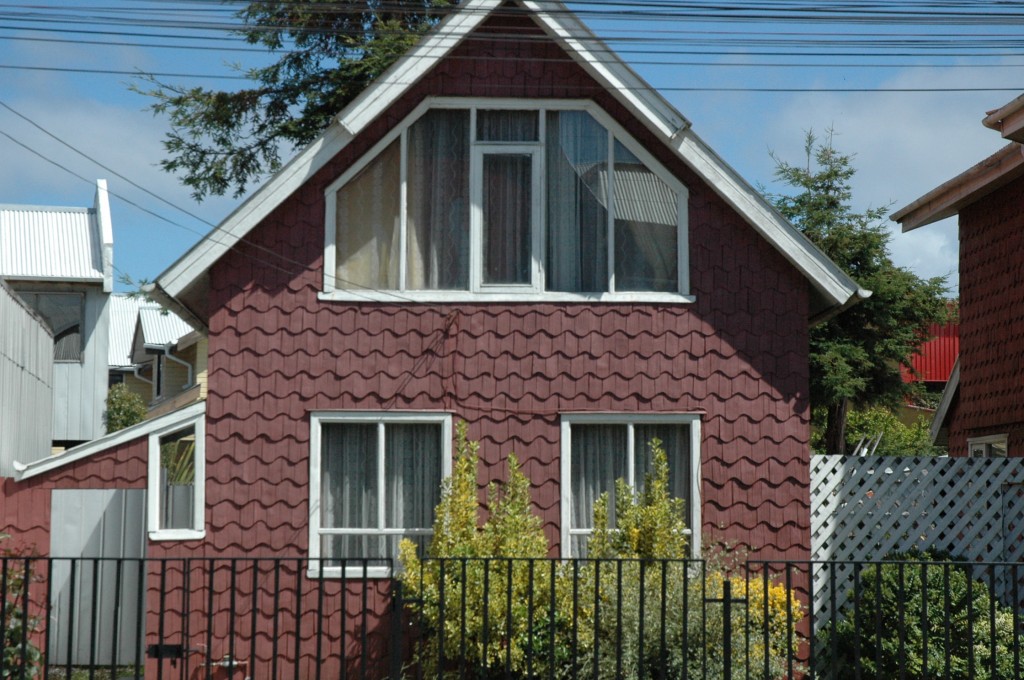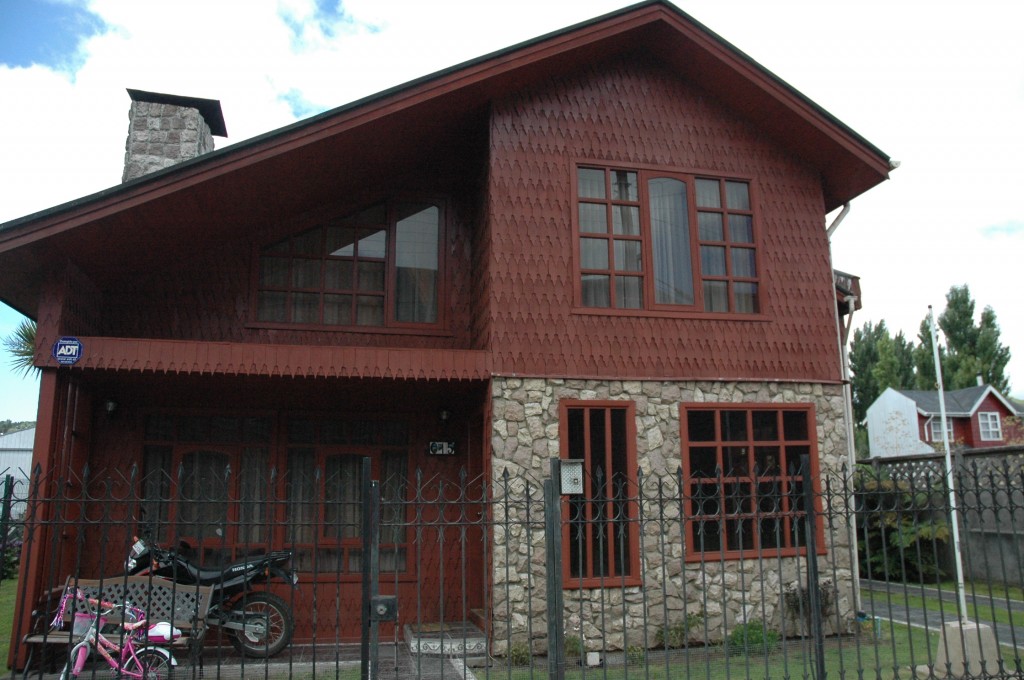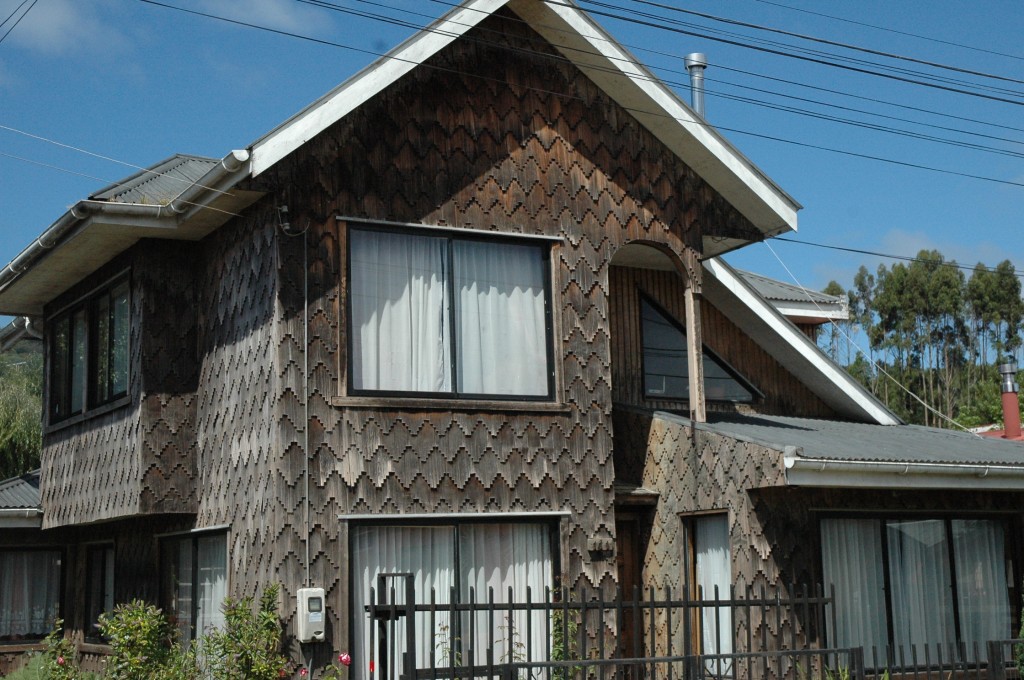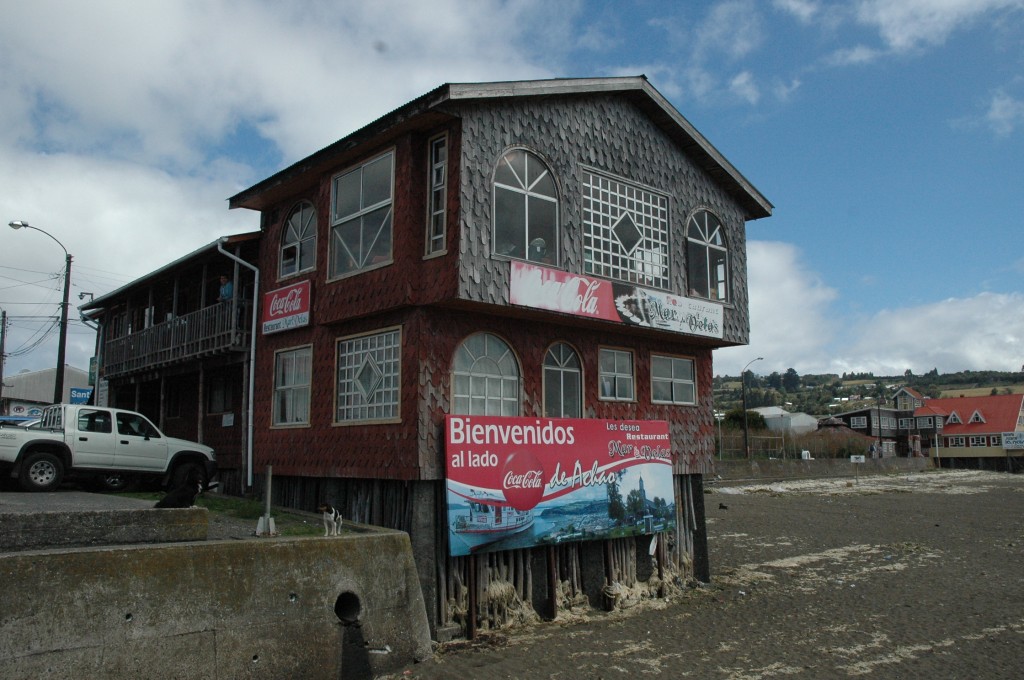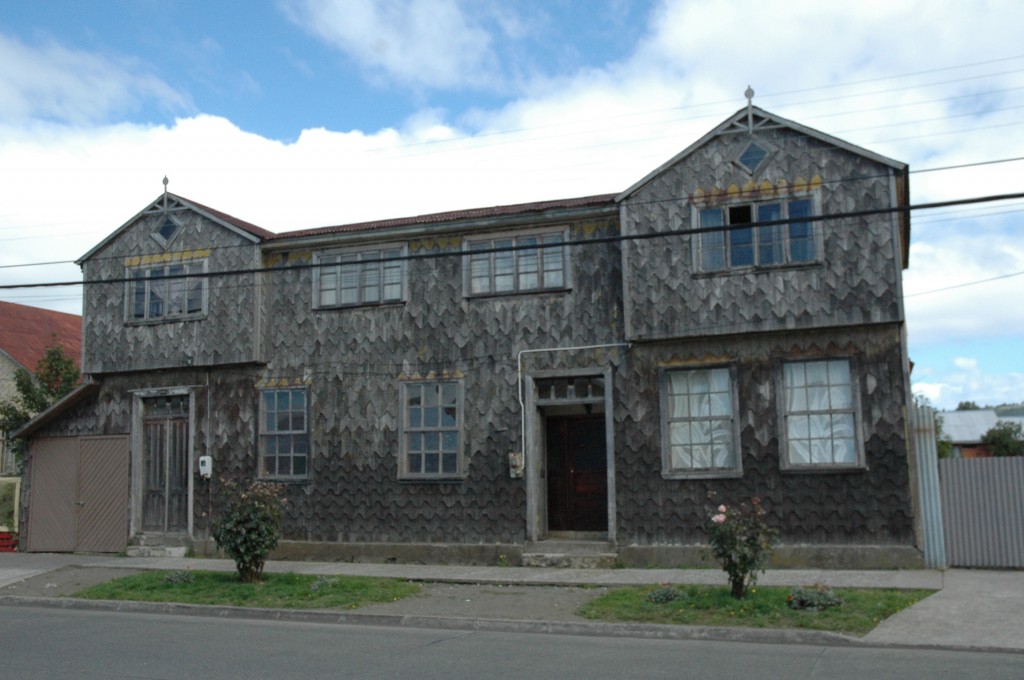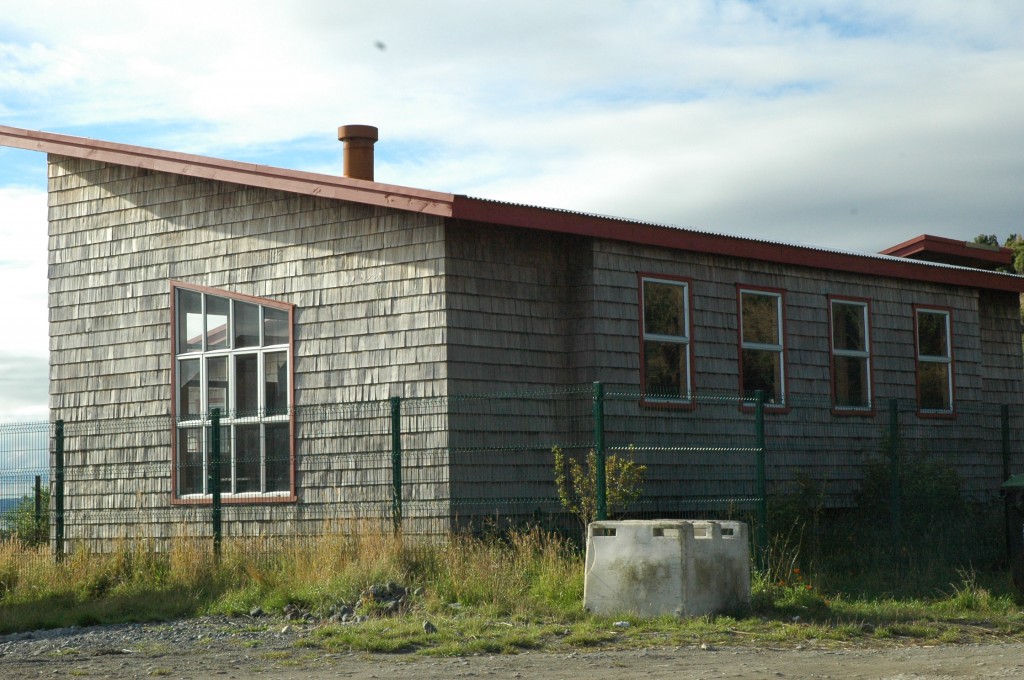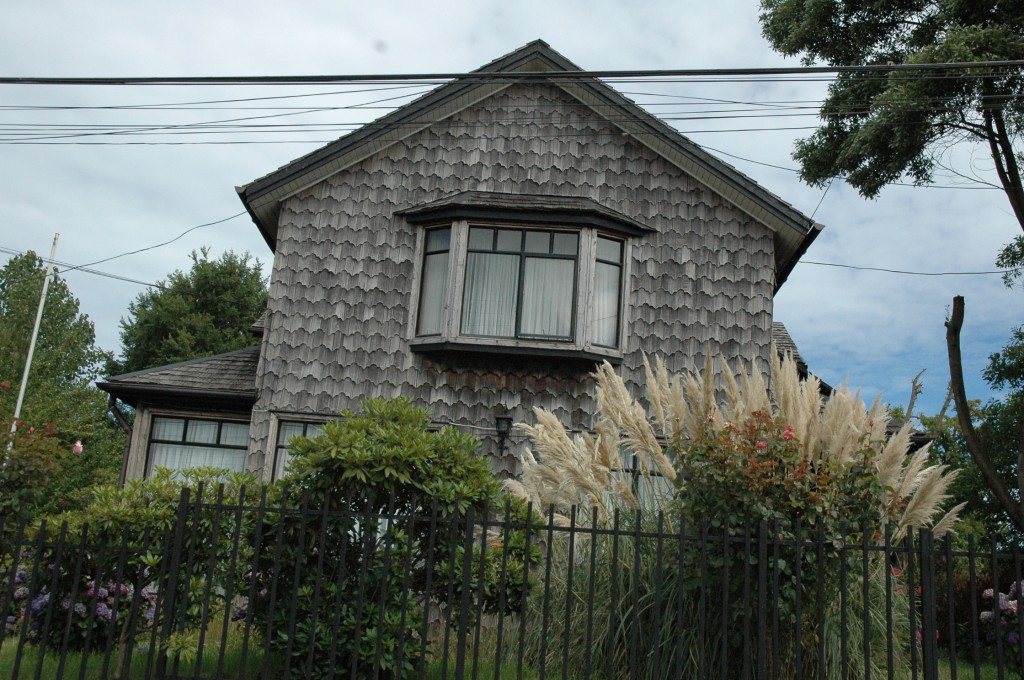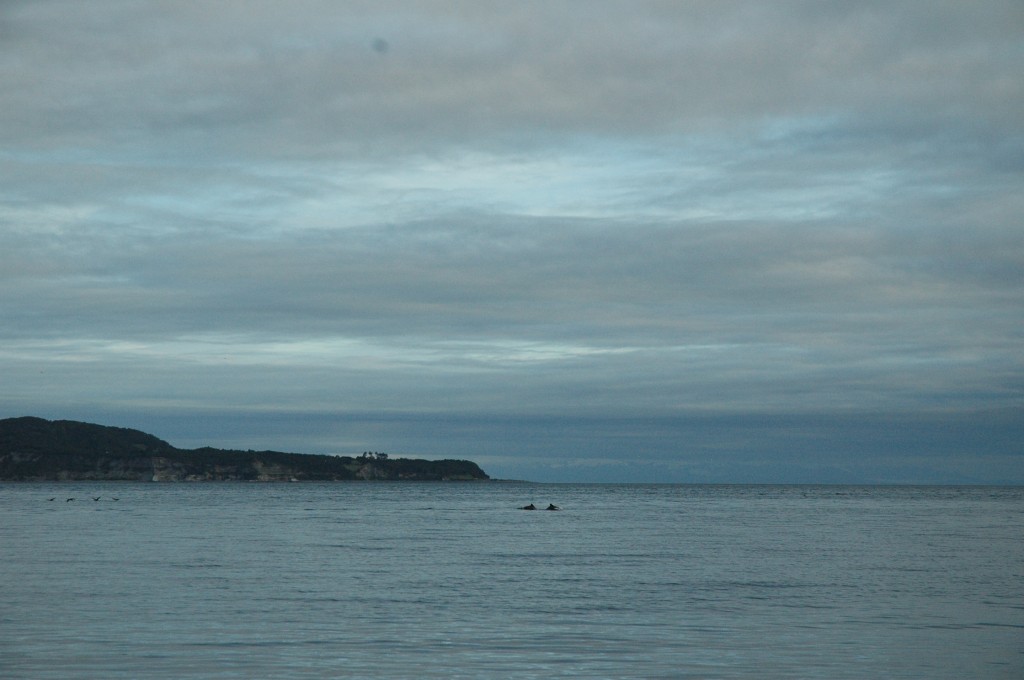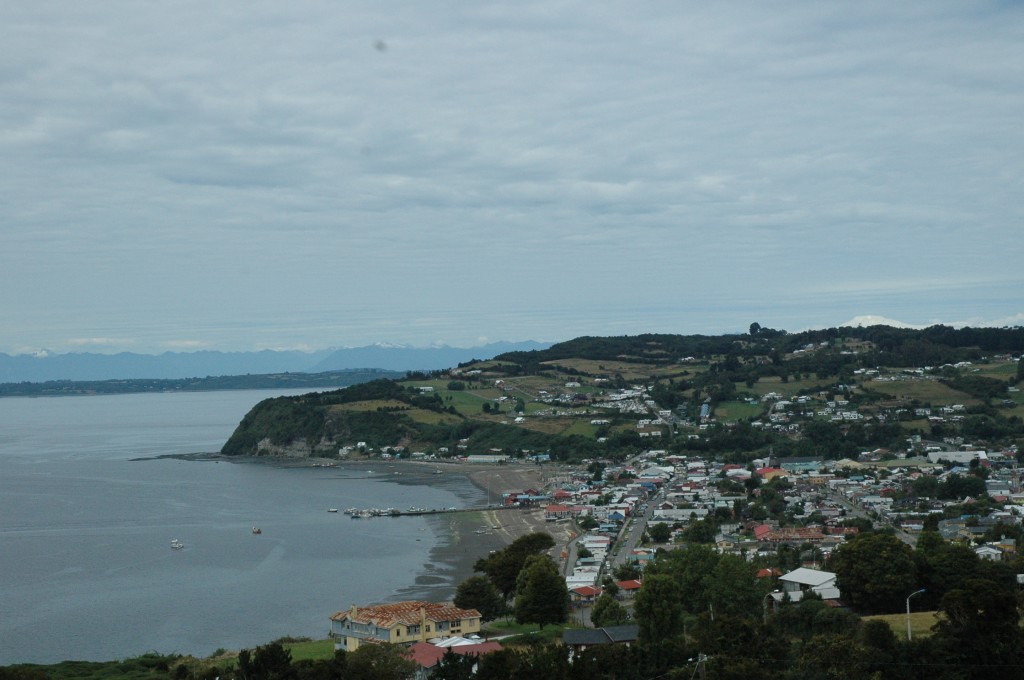 The remainder of our time on Quinchao was spent exploring the architecture, the countryside and the fruits of the sea. It was a time that could have gone on forever without feeling any degree of dissatisfaction. The gentle slow pace, the sounds and smells of the sea, and the beauty of sheep-speckled rolling hills were a feast for all of the senses. We were very fortunate to have among our group a homegrown son of Quinchao, who continued to surprise us with the delights of the island. The hospitalities that he and his extended family extended gave forth a trove of memories to last a lifetime.
The remainder of our time on Quinchao was spent exploring the architecture, the countryside and the fruits of the sea. It was a time that could have gone on forever without feeling any degree of dissatisfaction. The gentle slow pace, the sounds and smells of the sea, and the beauty of sheep-speckled rolling hills were a feast for all of the senses. We were very fortunate to have among our group a homegrown son of Quinchao, who continued to surprise us with the delights of the island. The hospitalities that he and his extended family extended gave forth a trove of memories to last a lifetime.
Rather than do a play-by-play of our time together, and thereby bore many readers, today’s post will present symbols that represent the uniqueness of the island. While my photo folder reads, “Churches, Oysters and the Sea,” the compellingly unique characteristics were many.
Houses of God
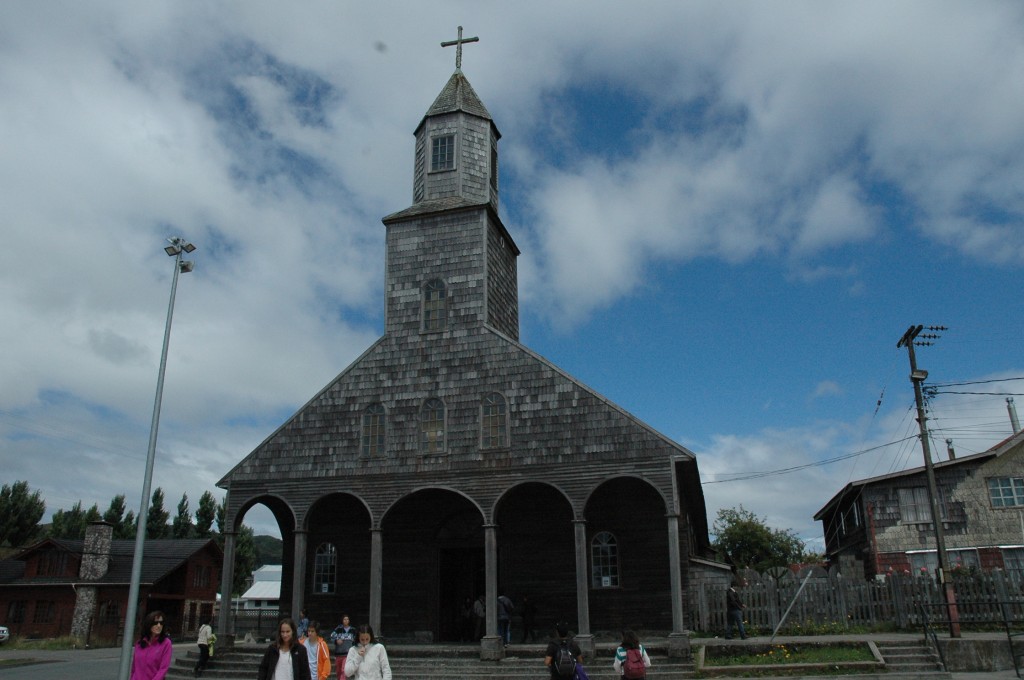 Chiloe, which includes all of the nearby smaller islands, such as Quinchao, is reknown for its more than 60 nationally protected wooden churches, 16 of which have been designated as World Heritage sites by UNESCO. Built by Jesuit missionaries during the 17th and 18th centuries, with the labor of local residents, these wooden churches represent an architectural style that is unique to Chiloe, and is often referred to as the Chilota School of Wooden Religious Architecture. The churches are each unique to the other, and are built completely out of wood, right down to the use of wooden pegs. The construction is similar to that used in shipbuilding, which is not entirely surprising, having been built by islanders. There are reputed to have been as many as 150 such churches dotting the islands at one time.
Chiloe, which includes all of the nearby smaller islands, such as Quinchao, is reknown for its more than 60 nationally protected wooden churches, 16 of which have been designated as World Heritage sites by UNESCO. Built by Jesuit missionaries during the 17th and 18th centuries, with the labor of local residents, these wooden churches represent an architectural style that is unique to Chiloe, and is often referred to as the Chilota School of Wooden Religious Architecture. The churches are each unique to the other, and are built completely out of wood, right down to the use of wooden pegs. The construction is similar to that used in shipbuilding, which is not entirely surprising, having been built by islanders. There are reputed to have been as many as 150 such churches dotting the islands at one time.
The two aspects that are particularly striking are the intricacy of the construction, and the sheer size. This is especially true of the Iglesia de Santa María de Loreto de Achao, which was completed around 1734. This church is constructed of both cypress and larch woods, and holds the honor of being the first built among
The church was designed with three aisles and a vaulted ceiling. Each of the original columns that support each arch is of a single piece, although at some point were enclosed within several adjoining pieces. Each column rests upon a stone. All but one stone has been enclosed. The floorboards still bear the marks of axes and hand chiseling. All of the moldings were intricately hand-carved. The mastery of the construction is reflective of the Austrian furniture maker, Anton Miller, and a lathe operator, Miguel, who supervised the Huilliche carpenters during the process.
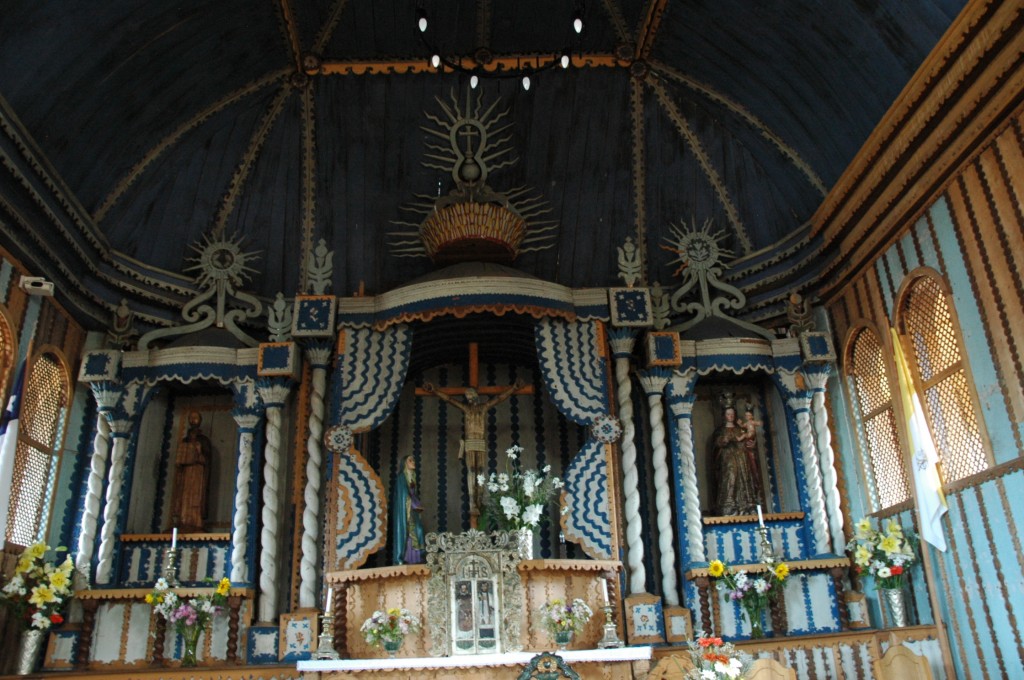 The carvings of the altars are amazingly intricate. It was almost too detailed for the eye and mind to process at first glance. Each part solicits particularly close inspection to appreciate the detail incorporated. Filigree, scallops and corkscrew columns all vie for attention. It is not the devil but the explicit and artistic dedication to the service to God that is in the detail.
The carvings of the altars are amazingly intricate. It was almost too detailed for the eye and mind to process at first glance. Each part solicits particularly close inspection to appreciate the detail incorporated. Filigree, scallops and corkscrew columns all vie for attention. It is not the devil but the explicit and artistic dedication to the service to God that is in the detail.
In 1960, the church suffered from damage from the 9.5 earthquake that nearly destroyed the city of Valdivia, although the epicenter was in Lumaco. This earthquake still holds the title of being the most powerful ever recorded in the world. Due to limited funding, it wasn’t until the mid-1990s that reconstruction and renovation would begin.
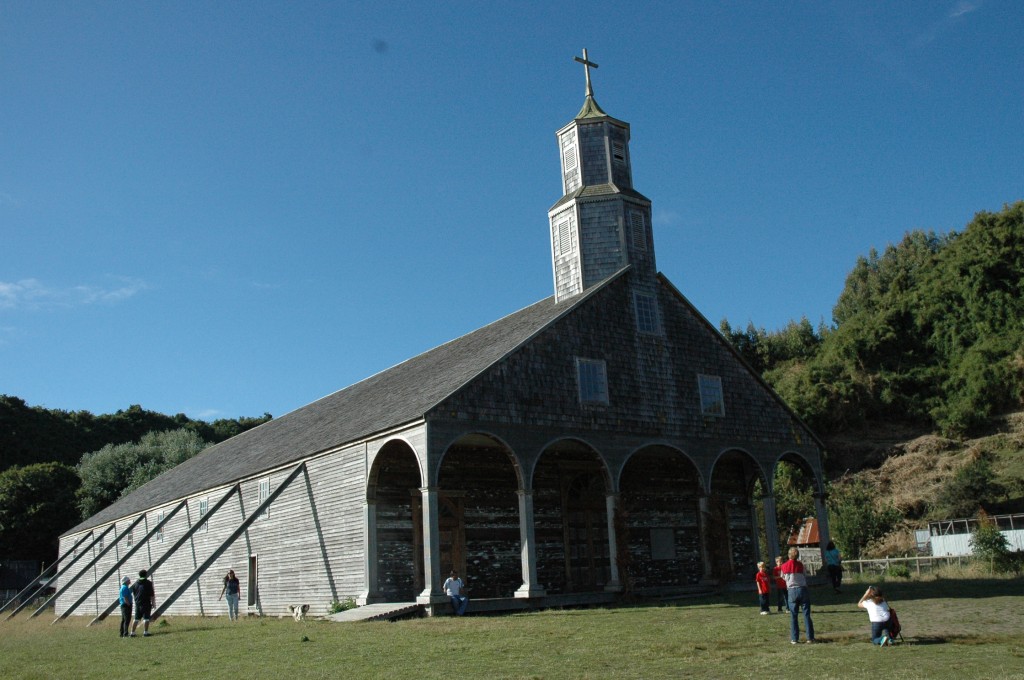 The second church that we visited was the Iglesia de Quinchao. Constructed of cypress, canelo and avellano woods, this church is also part of the nationally protected and World Heritage churches. Although much younger than the church in Achao, having been competed around 1880, it too has suffered the ravages of time and earthquakes, and still remains closed to the public. Both churches are all that remain of Jesuit construction. In 1767, the Jesuit missionary order was expelled from both Chile, due to suppression by Spain in all of its colonies and homeland, causing rippling social and economic effects in the islands.
The second church that we visited was the Iglesia de Quinchao. Constructed of cypress, canelo and avellano woods, this church is also part of the nationally protected and World Heritage churches. Although much younger than the church in Achao, having been competed around 1880, it too has suffered the ravages of time and earthquakes, and still remains closed to the public. Both churches are all that remain of Jesuit construction. In 1767, the Jesuit missionary order was expelled from both Chile, due to suppression by Spain in all of its colonies and homeland, causing rippling social and economic effects in the islands.
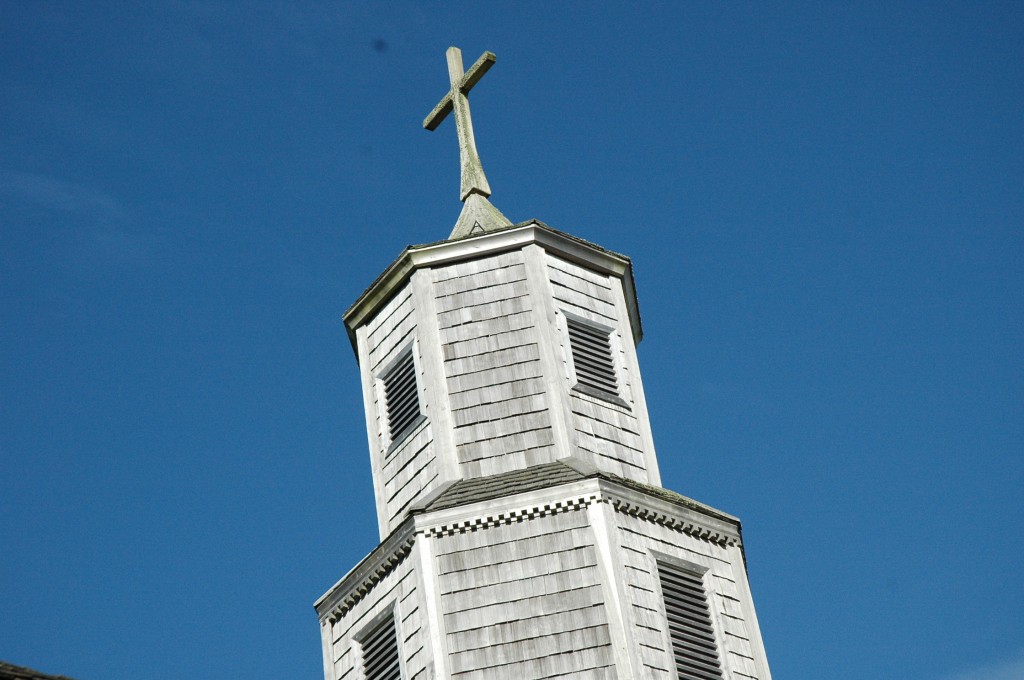 As the largest of all of the Chiloe churches, one feels dwarfed in its presence. Given the sparse population, I pondered the reasoning behind its mammoth size. Nonetheless, its simple lines elicited a sense of quiet grace.
As the largest of all of the Chiloe churches, one feels dwarfed in its presence. Given the sparse population, I pondered the reasoning behind its mammoth size. Nonetheless, its simple lines elicited a sense of quiet grace.
It was sad to see the deterioration of the building, 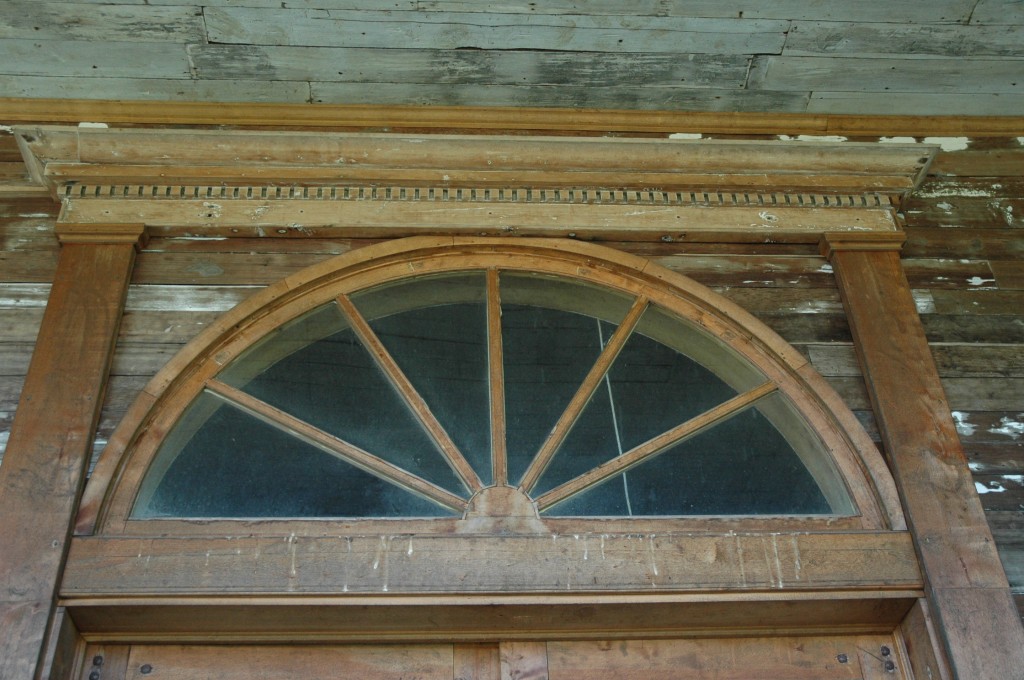 as well as the need for support posts placed by neighbors to keep it from listing to the side. However, renovations are being conducted as funding permits. In 2004, US$2.8 million was loaned by the Inter-American Development Bank to support restoration of churches in Chiloe. The last reconstruction for the Church of Quinchao was in 2010, however, the church still remains closed to the public. The most that we could do was appreciate the exterior. Perhaps one day, the glory of its interior will once again be revealed to the public.
as well as the need for support posts placed by neighbors to keep it from listing to the side. However, renovations are being conducted as funding permits. In 2004, US$2.8 million was loaned by the Inter-American Development Bank to support restoration of churches in Chiloe. The last reconstruction for the Church of Quinchao was in 2010, however, the church still remains closed to the public. The most that we could do was appreciate the exterior. Perhaps one day, the glory of its interior will once again be revealed to the public.
The last of the churches that we visited was Iglesia 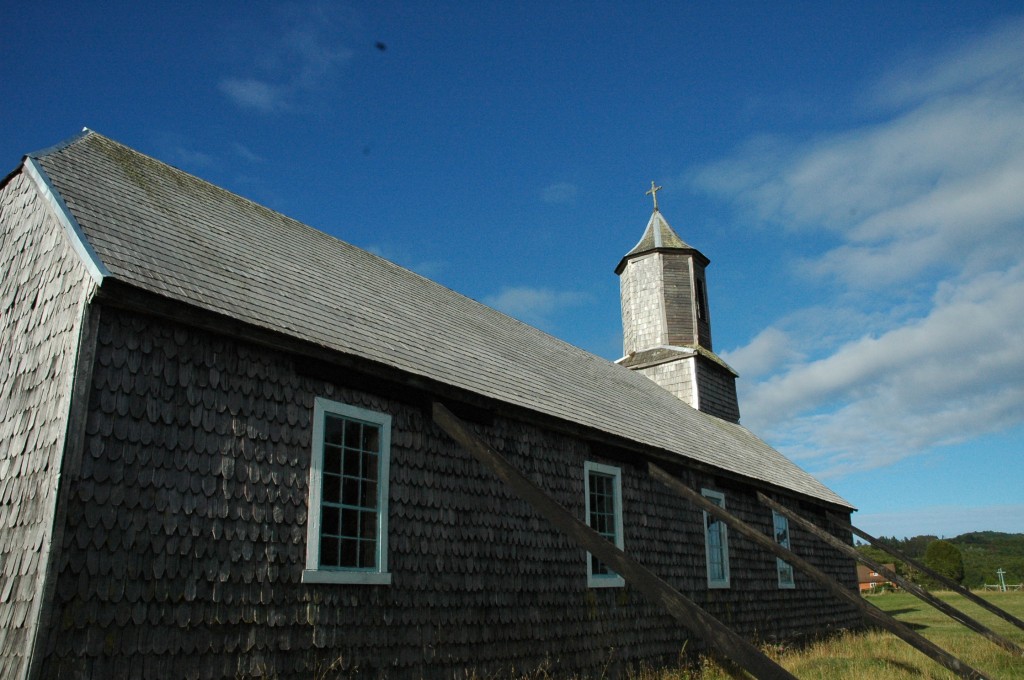 de Matao, which seemed the most forlorn of the three. Smaller than the others on the island, this iglesia was propped up on both sides by support posts, giving the impression that without their strength, the rafts would just split open into two. Nevertheless, one couldn’t help but appreciate the beauty of its lines, the hand-scalloped shingles, and the rising bell tower. Whereas other Chilota churches are said to face the sea, with the bell towers as beacons to sailors and fishermen, this church had its back to the water. It seemed to have
de Matao, which seemed the most forlorn of the three. Smaller than the others on the island, this iglesia was propped up on both sides by support posts, giving the impression that without their strength, the rafts would just split open into two. Nevertheless, one couldn’t help but appreciate the beauty of its lines, the hand-scalloped shingles, and the rising bell tower. Whereas other Chilota churches are said to face the sea, with the bell towers as beacons to sailors and fishermen, this church had its back to the water. It seemed to have 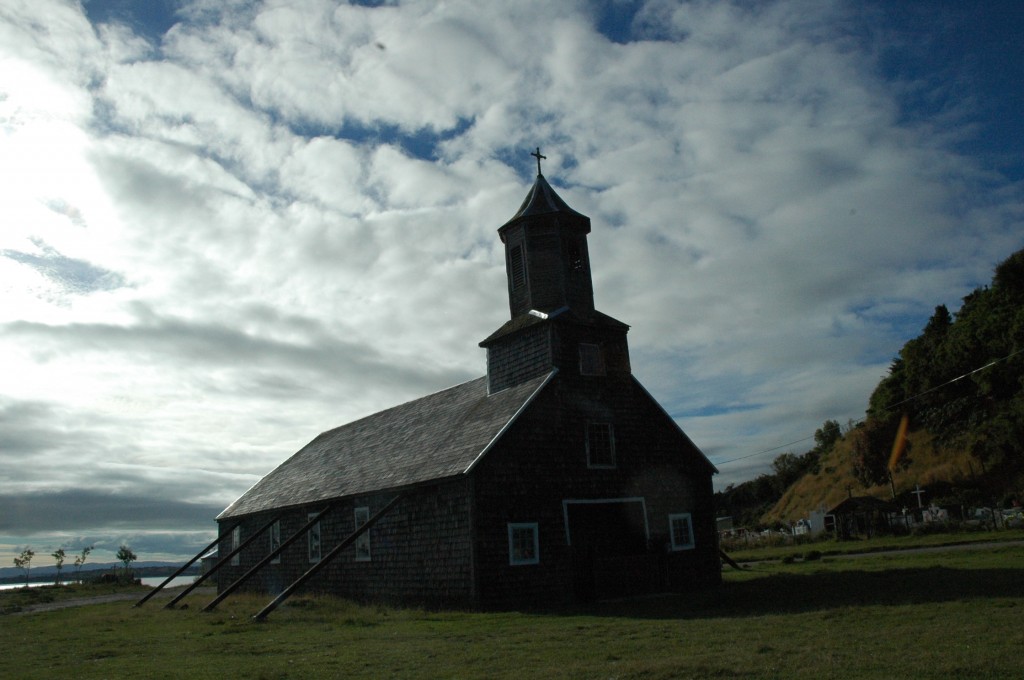 sailed in from the sea to rest just beyond the sandy shores.
sailed in from the sea to rest just beyond the sandy shores.
With all of these churches, I pondered the need for the extravagance in size, the aspirations of the Jesuit and missionaries that created the expectations for such space, and the reactions of those early parishioners who sat upon the humble benches to receive the gospels passed down through the centuries. While no longer serving the spiritual needs of the communities, the churches do serve as an attraction to tourists looking for connection to an important era in the history of the islands. Perhaps one day, funding will be sufficient to truly preserve their legacy, and continue to be beacons to all.
Houses of Man
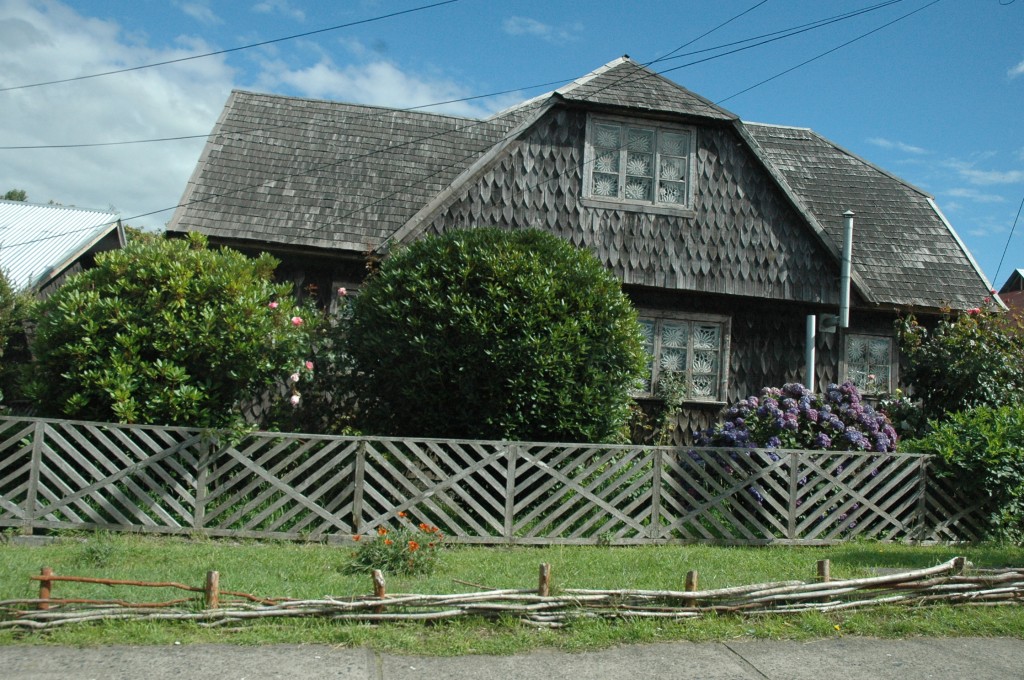 When we weren’t exploring ecclesiastical bodes, the houses of the common man commanded attention. Chiloe is also noted for its vast variety of shingle style houses, and the Island of Quinchao was no exception. It was amazing to see just how many different patterns of shingle could be created. It seemed like no two were alike. Some bore weathered, natural shingles, while others sported colors that brightened the grey winter days. Many windows were decorated with lace that appeared as giant snowflakes in each glass pane. While some gave the impression of being as old as the inception of colonization on the island, even newer houses carried on the tradition of shingle craftsmanship. The commercial buildings also featured the distinctive shingling. Some of my favorite…
When we weren’t exploring ecclesiastical bodes, the houses of the common man commanded attention. Chiloe is also noted for its vast variety of shingle style houses, and the Island of Quinchao was no exception. It was amazing to see just how many different patterns of shingle could be created. It seemed like no two were alike. Some bore weathered, natural shingles, while others sported colors that brightened the grey winter days. Many windows were decorated with lace that appeared as giant snowflakes in each glass pane. While some gave the impression of being as old as the inception of colonization on the island, even newer houses carried on the tradition of shingle craftsmanship. The commercial buildings also featured the distinctive shingling. Some of my favorite…
Achao
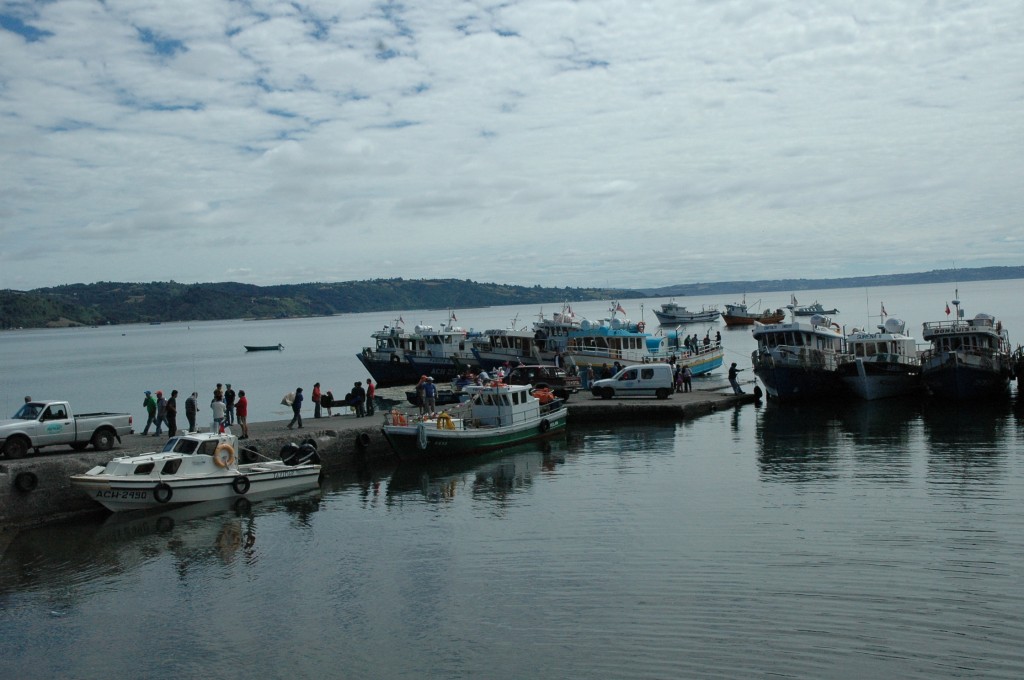 When Achao isn’t playing host to festivals, it continues life as a hardworking fishing and sheep raising community. My mate and I quickly fell for its gentle, simple charms. One morning, we wandered down to the main docks to watching the carrying on of normal life. As a small island town, ferryboats provide the lifeline to Chiloe, the largest of the island, and hence to the mainland of Chile. Everything not produced on the Quinchao is brought in by boat. It was intriguing to watch the parade of people, some leaving Achao to go to work or return home from their weekend stays; others waiting for much needed goods to arrive. One
When Achao isn’t playing host to festivals, it continues life as a hardworking fishing and sheep raising community. My mate and I quickly fell for its gentle, simple charms. One morning, we wandered down to the main docks to watching the carrying on of normal life. As a small island town, ferryboats provide the lifeline to Chiloe, the largest of the island, and hence to the mainland of Chile. Everything not produced on the Quinchao is brought in by boat. It was intriguing to watch the parade of people, some leaving Achao to go to work or return home from their weekend stays; others waiting for much needed goods to arrive. One 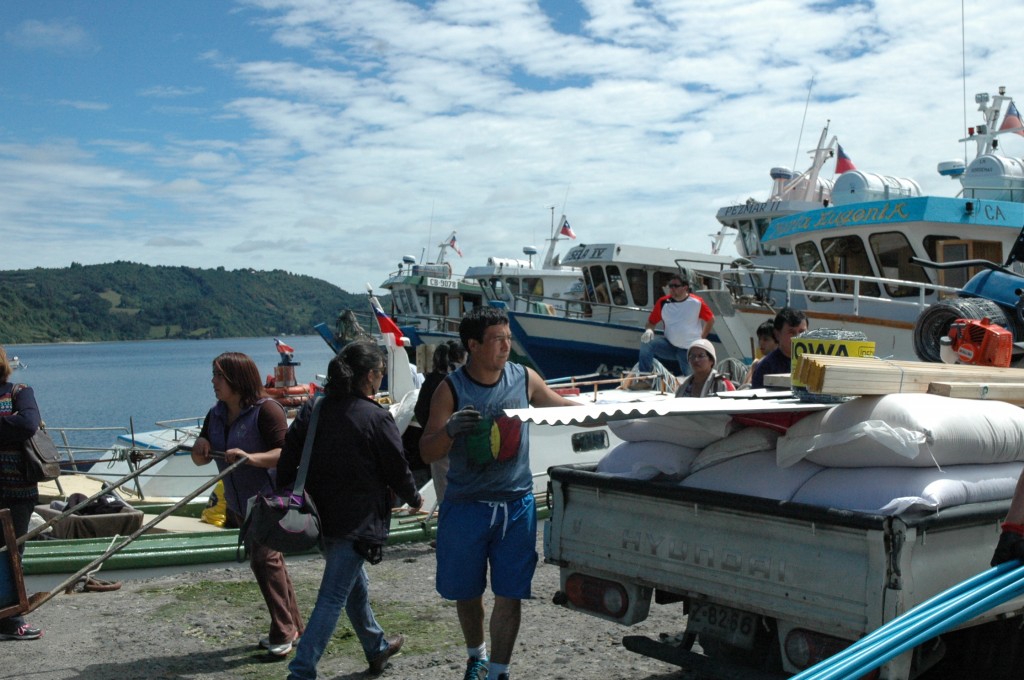 man was stacking newly arrived building supplies into the bed of his truck. Another was carrying household goods.
man was stacking newly arrived building supplies into the bed of his truck. Another was carrying household goods.
We stopped to talk with one man who was just tying his boat up to the dock. He was the owner/operator of Taximar, a boat taxi service that traveled from Achao to many of the surrounding sister islands. Some of the islands had populations as small as an extended family, and his services provided their much dependent link. He was originally from 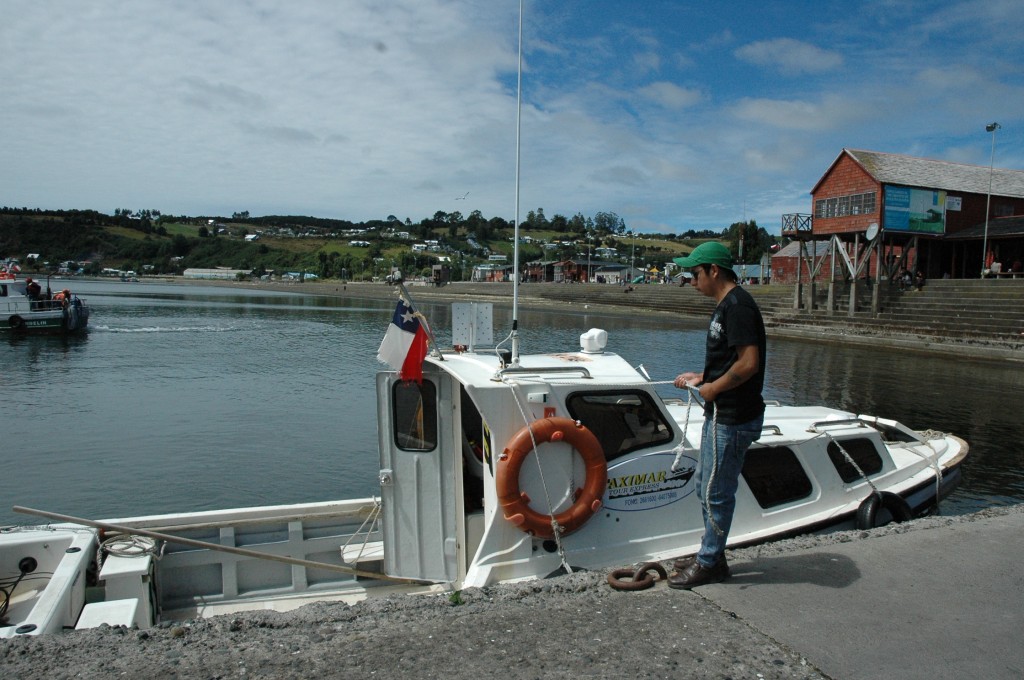 Valporaiso, and had decided that life there represented too much of a rat race for him. He wanted to raise his family in a small, peaceful community, and went almost to the end of the earth to find it. I realized how everything is a matter of reference in life. My life in Chile was my escape from the rat race as I knew it in the U.S. Here was a man looking to escape from my escape to something even simpler.
Valporaiso, and had decided that life there represented too much of a rat race for him. He wanted to raise his family in a small, peaceful community, and went almost to the end of the earth to find it. I realized how everything is a matter of reference in life. My life in Chile was my escape from the rat race as I knew it in the U.S. Here was a man looking to escape from my escape to something even simpler.
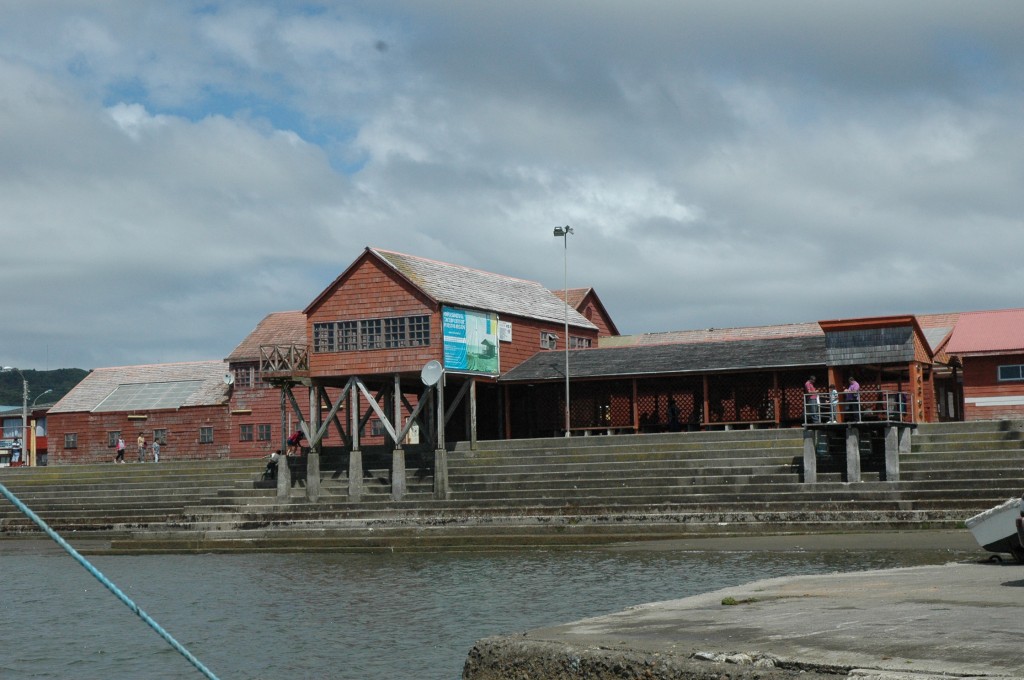 Adjacent to the docks were a series of small buildings that housed a small feria, that is, a place where merchants came together to sell their wares. One building featured wool and wool products derived from the sheep that were raised in the surrounding hillsides. The quality of wool and craftsmanship far exceeded the low, low prices of the goods. Ever a lover of natural products, it was a delight to wander from stall to stall, and purchase a few skeins of wool and a hat to keep warm on the next ferry ride. The walk to the part selling seafood literally just off the boat had me wishing for access to a kitchen to curb my desire to play with all of these wonderful delights. In the end,
Adjacent to the docks were a series of small buildings that housed a small feria, that is, a place where merchants came together to sell their wares. One building featured wool and wool products derived from the sheep that were raised in the surrounding hillsides. The quality of wool and craftsmanship far exceeded the low, low prices of the goods. Ever a lover of natural products, it was a delight to wander from stall to stall, and purchase a few skeins of wool and a hat to keep warm on the next ferry ride. The walk to the part selling seafood literally just off the boat had me wishing for access to a kitchen to curb my desire to play with all of these wonderful delights. In the end, 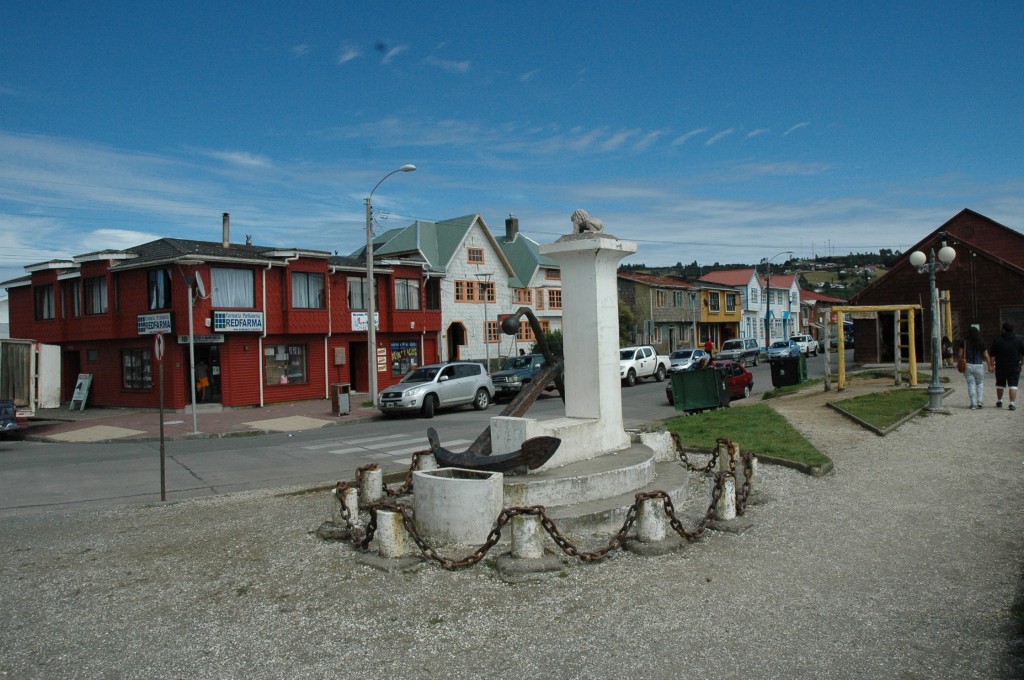 I had to settle for our planned afternoon oyster feast.
I had to settle for our planned afternoon oyster feast.
Oysters by the Sea
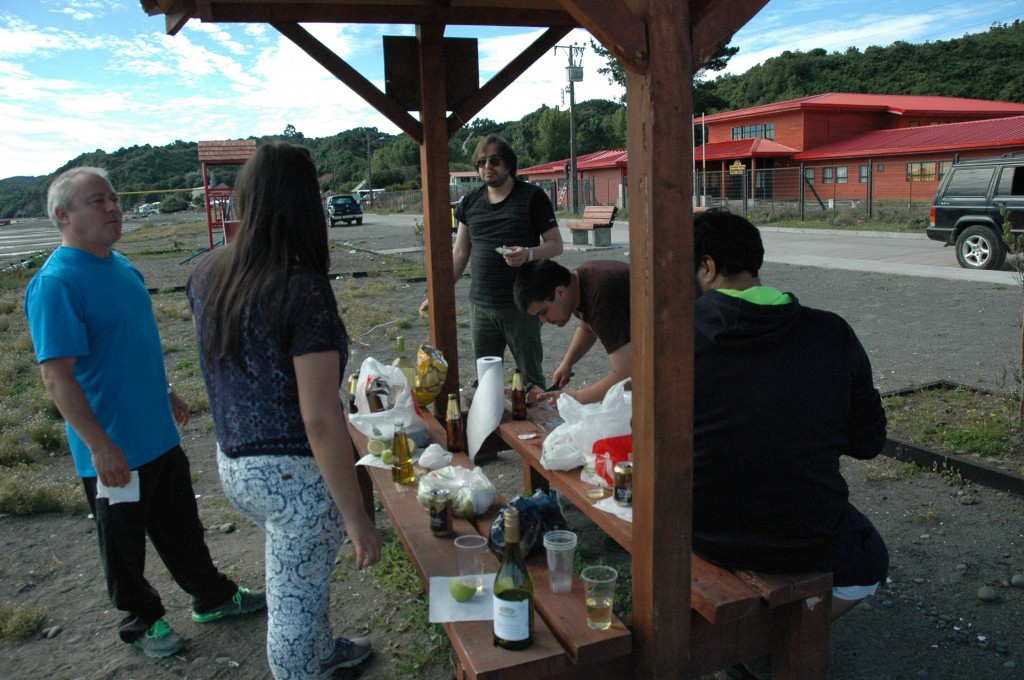 We were fortunate to have among our group a young man who was raised in Achao, and knew all of the intricacies of the Quinchao. For our last full day on the island, he had made arrangements for a simple feast of fresh oysters in one of the small communities that dotted the island. We made a brief stop in a tiny grocery to buy some beers, a couple bottles of wine, olive oil, lemons, hot sauce, plastic cups and paper towels, and then pressed onward to our destination.
We were fortunate to have among our group a young man who was raised in Achao, and knew all of the intricacies of the Quinchao. For our last full day on the island, he had made arrangements for a simple feast of fresh oysters in one of the small communities that dotted the island. We made a brief stop in a tiny grocery to buy some beers, a couple bottles of wine, olive oil, lemons, hot sauce, plastic cups and paper towels, and then pressed onward to our destination.
The oyster vendor lived in a modest house, with a small sign at the gate denoting its trade. Orders were taken one day and then filled the next. Apparently word of mouth was all that was needed to keep business flowing smoothly for there were no mammoth signs advertising their wares. Most surprising of all was how cheap the oysters were. If memory serves, they were no more than about 25¢ each.
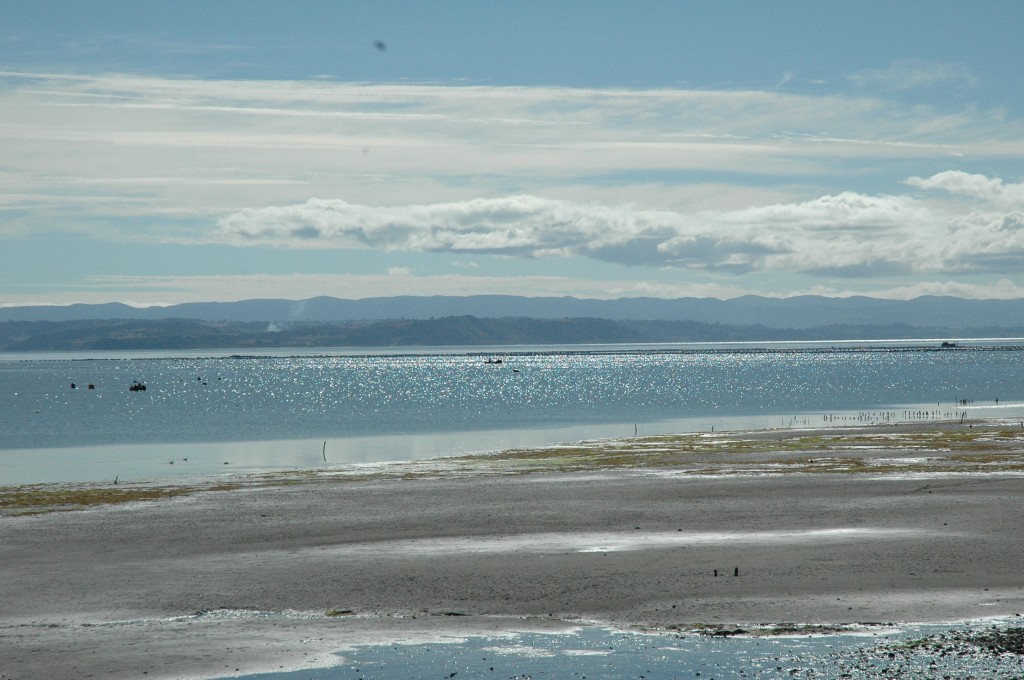 Down the road, we found benches along the shore that would serve as host to our simple feast. The sun was shining, and pluffy clouds lined the blue skies. The water sparkled like diamonds, as fishing boats passed by. It seemed so surreal to think that this was now my life, wrapped in the warmth of the day, and enjoying a glass of wine in one hand, and a freshly harvested, hot sauce and lemon drizzled oyster in the other, while gazing out at a bit of oceanly heaven.
Down the road, we found benches along the shore that would serve as host to our simple feast. The sun was shining, and pluffy clouds lined the blue skies. The water sparkled like diamonds, as fishing boats passed by. It seemed so surreal to think that this was now my life, wrapped in the warmth of the day, and enjoying a glass of wine in one hand, and a freshly harvested, hot sauce and lemon drizzled oyster in the other, while gazing out at a bit of oceanly heaven.
A Tail of a Whale
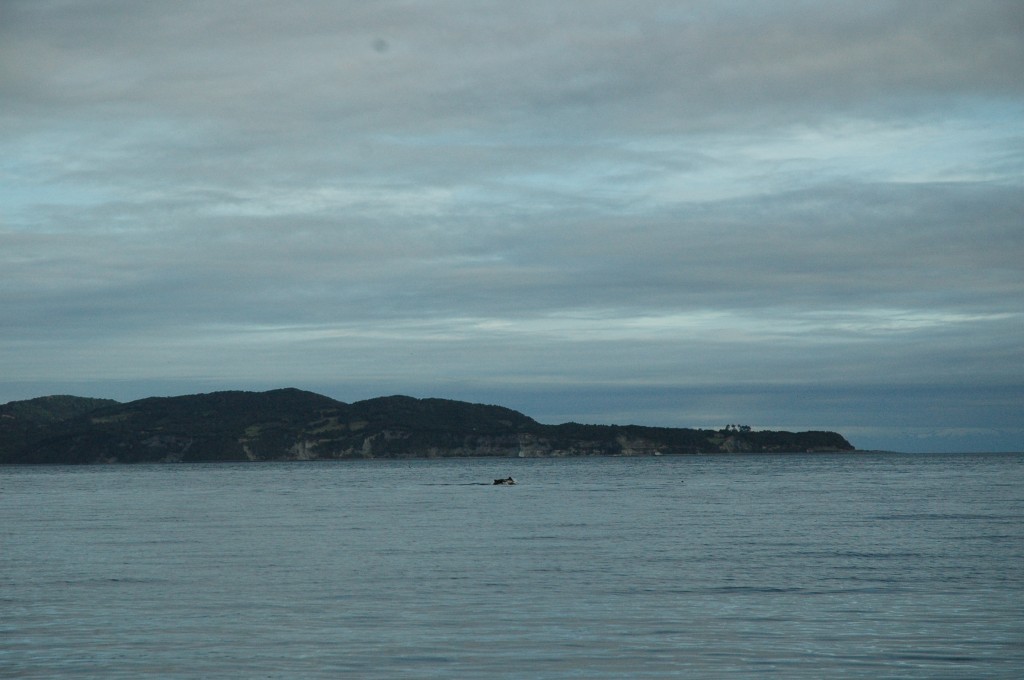 Just when I thought life on the island couldn’t get any better, I had an opportunity to experience the sights of whales. It was enthralling to watch them rise up out of the water for a bit of air and then immediately curve back down into the water. There was a herd crossing the channel between the islands, and I rued not having a better lens to capture their movement. It is only with enlargement that the herd appears in the photos.
Just when I thought life on the island couldn’t get any better, I had an opportunity to experience the sights of whales. It was enthralling to watch them rise up out of the water for a bit of air and then immediately curve back down into the water. There was a herd crossing the channel between the islands, and I rued not having a better lens to capture their movement. It is only with enlargement that the herd appears in the photos.
Island Values and Fishing Tales
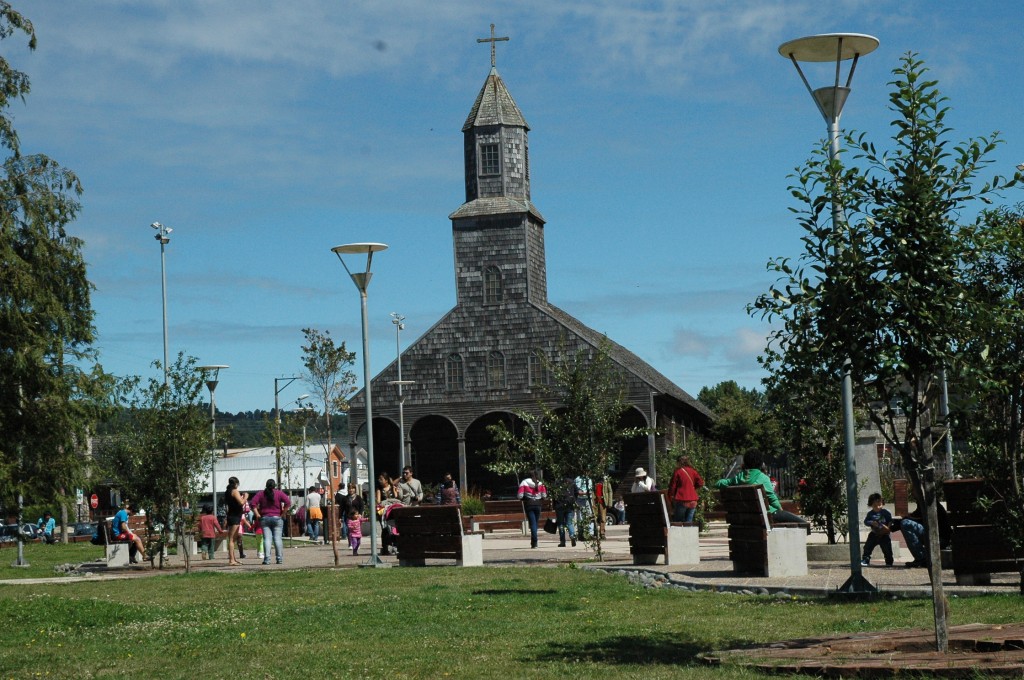 While it would be easy to expound upon the obvious cultural and societal values instilled in the inhabitants of this small island, it is the smaller, subtle ones that particularly captured my attention. One of note came to light on our last night, when some in our group were hunkering for a bit beef, after living constantly on the fares of the sea. So, an uncle (everyone older in Chile is a Tio, uncle, or a Tia, aunt) called a neighbor to see what might be available. The neighbor had a nondescript hunk of beef, but didn’t want money for it. He wanted the beef replaced. On this sea-faring, sheep-raising island, beef was not to be easily had, but had to be ferried in from some distant point. It was then that I realized that the law of supply and demand can make some goods more precious than gold.
While it would be easy to expound upon the obvious cultural and societal values instilled in the inhabitants of this small island, it is the smaller, subtle ones that particularly captured my attention. One of note came to light on our last night, when some in our group were hunkering for a bit beef, after living constantly on the fares of the sea. So, an uncle (everyone older in Chile is a Tio, uncle, or a Tia, aunt) called a neighbor to see what might be available. The neighbor had a nondescript hunk of beef, but didn’t want money for it. He wanted the beef replaced. On this sea-faring, sheep-raising island, beef was not to be easily had, but had to be ferried in from some distant point. It was then that I realized that the law of supply and demand can make some goods more precious than gold.
Another value that comes to mind is that family and friends did not gather around the television every night, but gathered around a massive, wood-burning cook stove, to share in conversations, laugher and a glass of wine, pisco or cup of tea. The stoves were positioned far enough away from the wall, that a banquet could be built around two sides of it. This served to keep family and friends warm on the long, chilly nights. It was another of the many simple pleasures to be enjoyed during our stay.
Perhaps the best value of all was the delight in conversation itself. In an age were communication has been relegated to Facebook, Instagram and Twitter, it is always refreshing to discover that real, live conversations, conducted face to face, still exist. While this is an inherent trait throughout Chile, it was especially remarkable in Quinchao, for during our entire stay, I never once heard a television blaring. Radios, yes, but no intrusive, mind-numbing tube.
During the many conversations that part-took, I learned much about the lives of island people, of their daily activities and aspirations, of their values, their experiences and their myths. One myth that people delighted in telling is that of the trauco, an ogre like creature that is said to inhabit the islands and is attributed for all sorts of grievances. For example, the trauco is held responsible for many “unexplained” pregnancies. He serves to remove any social disgrace from the mother and child. Other myths include witches, ghost ships, dancing sea maidens draped in seaweed and strange sea creatures.
While many of these myths helped to explain the mysteries of nature, other tales are told of strange encounters, disappearances and unexplainable sightings encountered by fishing crews. During the grilling of the priceless piece of beef, one tio regaled us with stories of local experiences, of strange lights cast on the ocean and the disappearances of fishermen. Just another fishing tale told around the grill on a dark starry night, or the truth, we’ll never know. These islands were full of mysteries, so who is to say what is real and what is myth.
